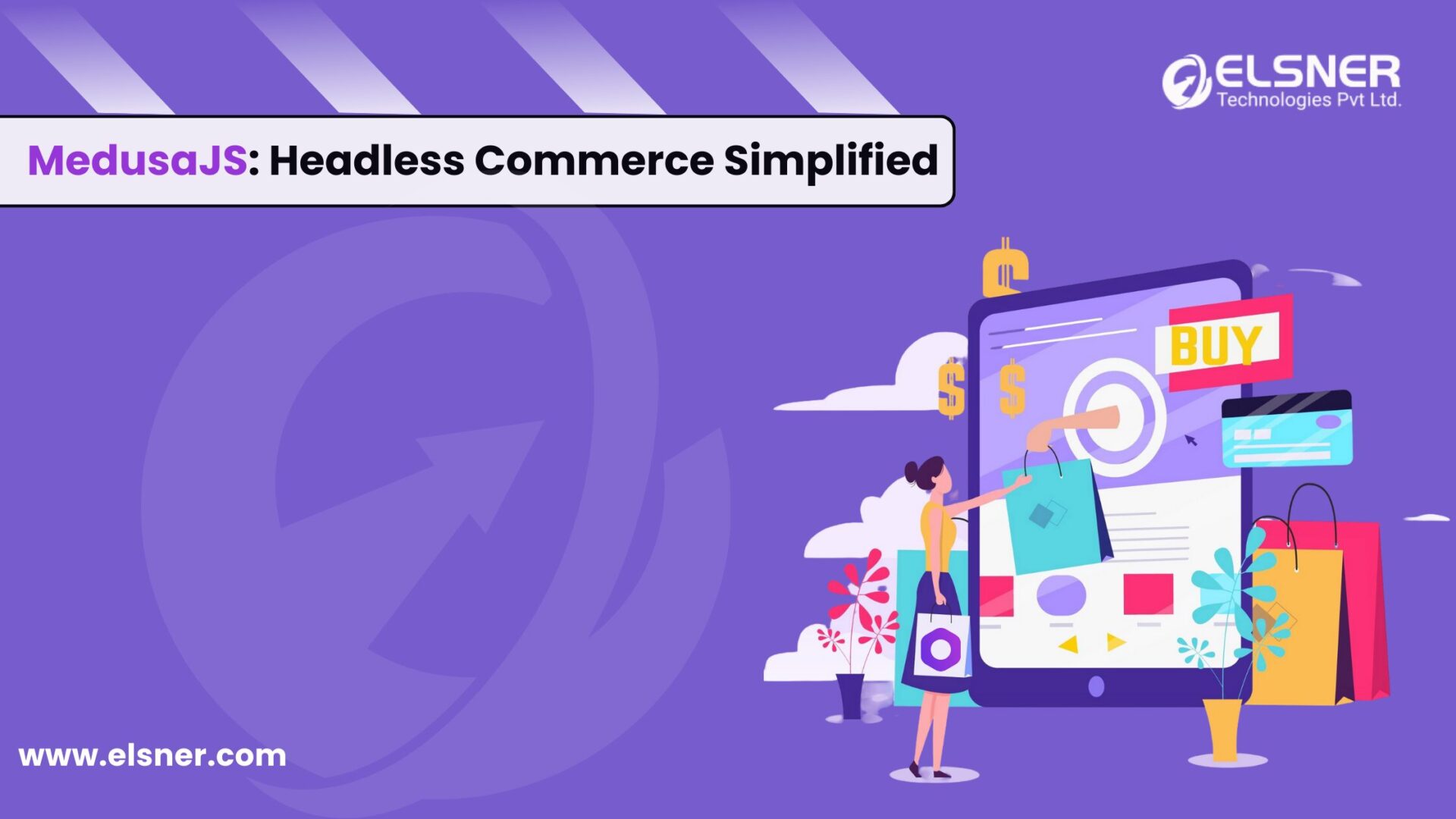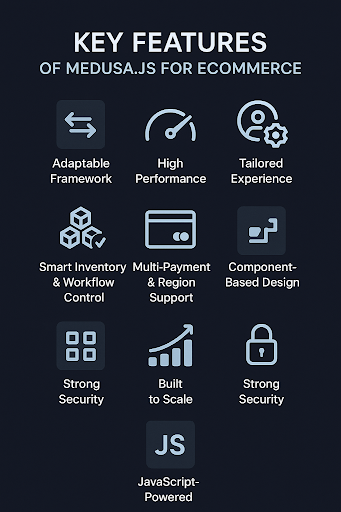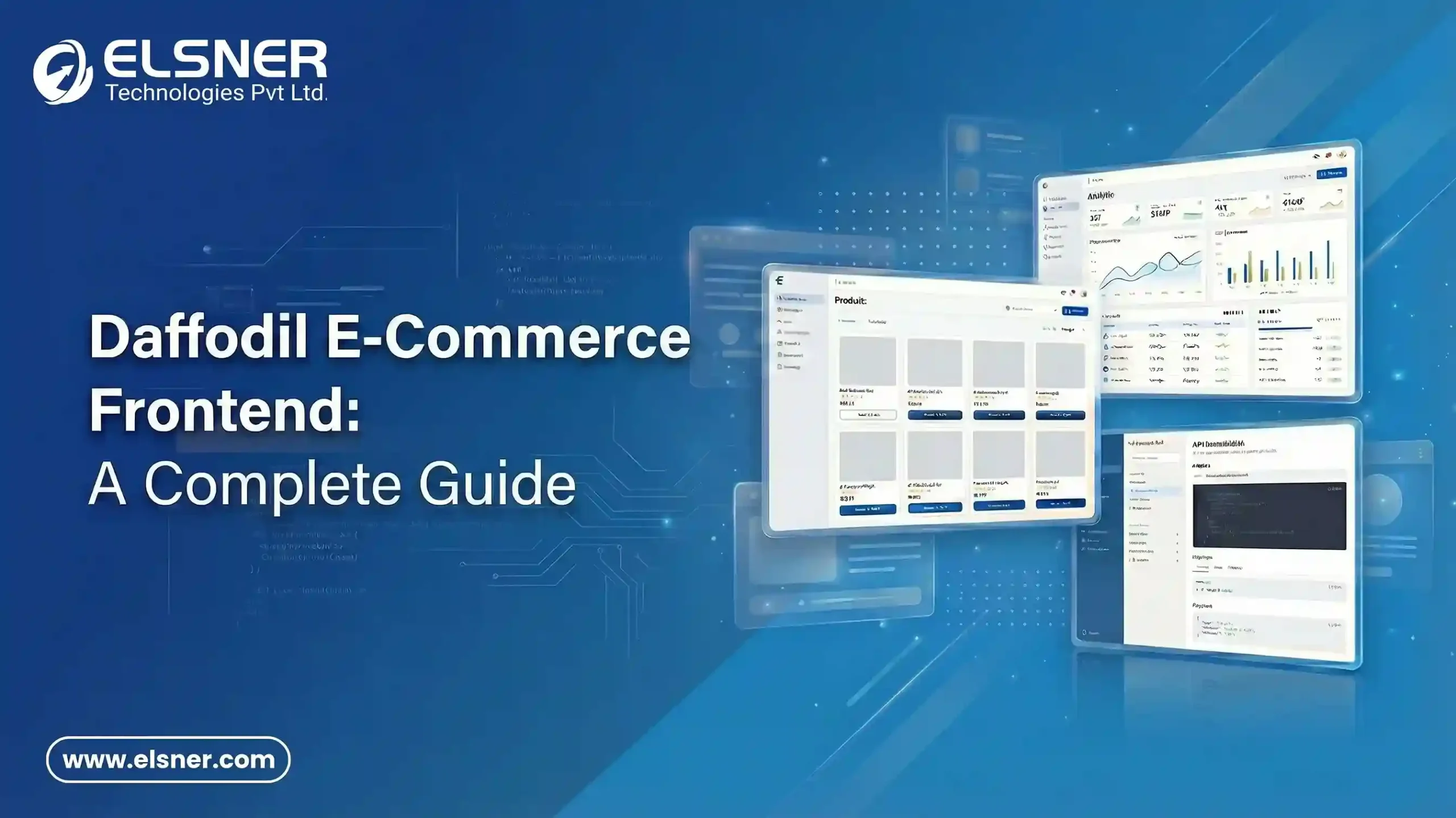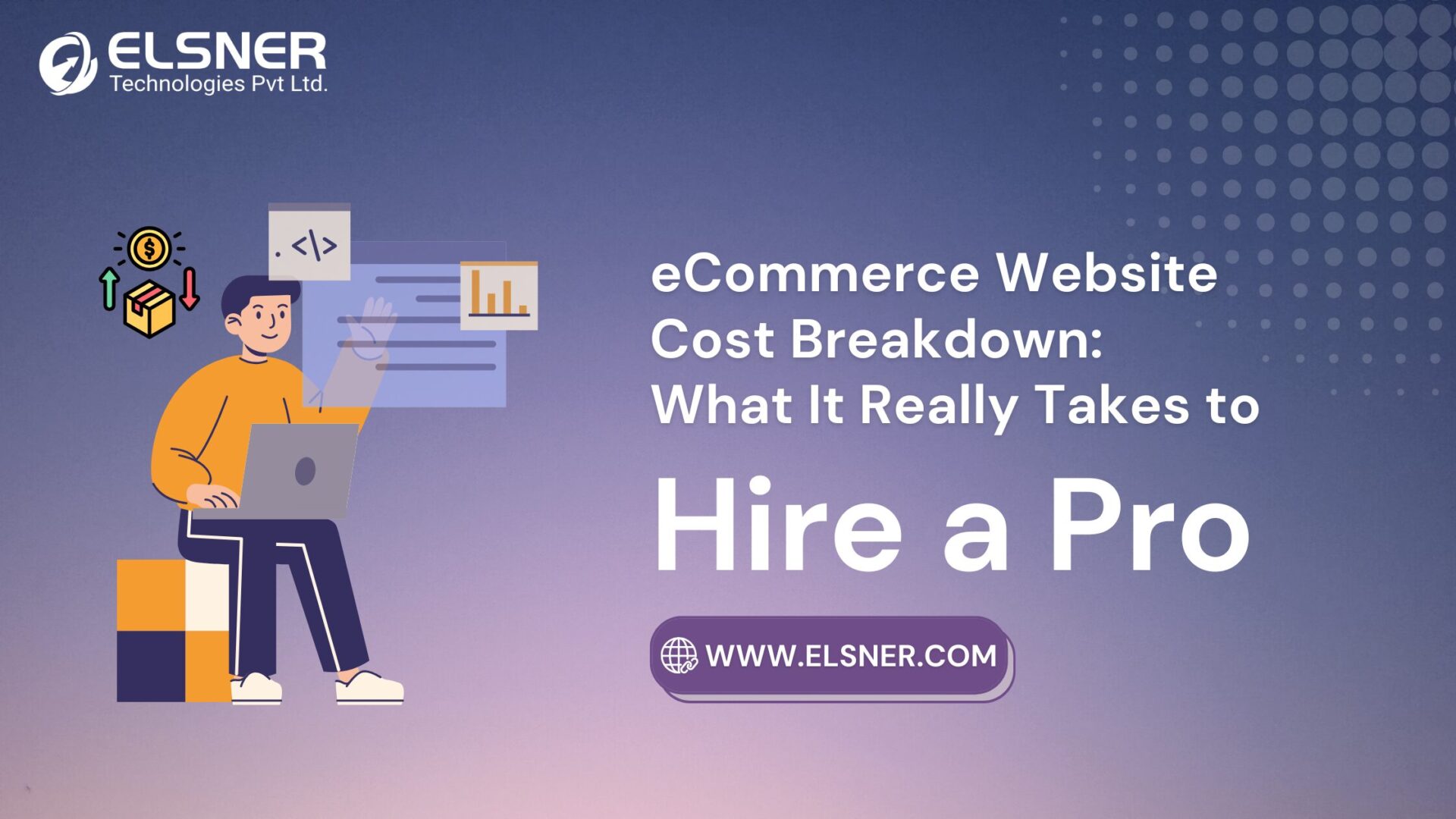- What’s the Deal with MedusaJS?
- Why Headless Commerce Rocks?
- How MedusaJS Works?
- The Headless Backend
- The Admin Dashboard
- The Storefront
- Why Choose Medusajs Headless Commerce?
- Open-Source Perks
- Developer’s Dream
- Scales Like a Charm
- Power Your Online Store with MedusaJS
- Real-World Use Cases for DTC and Retail Teams
- DTC Brands Building Unique Experiences
- Multi-Channel Retail Expansion
- Niche Marketplaces for Specialty Goods
- Global Brands with Localized Stores
- MedusaJS vs. Shopify vs. Magento vs. CommerceTools: Comparison Table
- Where Does It Get Tricky?
- What’s Next for MedusaJS?
- FAQ: Your MedusaJS Questions Answered
- What’s MedusaJS best for?
- Is it really free?
- How beginner-friendly is it?
- Where’s the best place to learn more?
Ecommerce is becoming increasingly competitive and complex. And now businesses are scrambling for tools that strike a balance between freedom, functionality, and affordability.
The legacy platforms that once dominated the Ecommerce domain are starting to feel sluggish and inefficient. Enter MedusaJS, a breath of fresh air for anyone building an online store. This Ecommerce engine is gaining serious traction among modern Ecommerce teams and forward-thinking Ecommerce Development Company looking for flexible, headless solutions.
For those curious about this new architecture and want MedusaJS explained, you’ve come to the right place. Today, we’ll talk about how MedusaJS works and why it’s got developers and brands buzzing.
What’s the Deal with MedusaJS?
Imagine an Ecommerce platform that doesn’t trap businesses in rigid templates or convoluted codebases. That’s MedusaJS—a Node.js-based, open-source platform that hands developers the keys to build stores exactly how they want.
Unlike heavyweights like Shopify or Magento, MedusaJS splits the front-end (the customer-facing part) from the backend (the engine room of products and payments).
The MedusaJS headless commerce setup means total freedom to craft a store that’s uniquely on-brand.
Why Headless Commerce Rocks?
Old-school platforms bundle everything together, which can make tweaking a store feel like solving a Rubik’s Cube blindfolded. MedusaJS headless commerce changes the game by separating the front-end and backend, letting businesses:
- Tailored Storefronts: Build a website, app, or wearable experience that’s totally on-brand.
- Easy Integrations: Plug into payment systems, CMS tools, and analytics platforms without heavy lifting.
- Smart Scaling: Add new features or swap out services without breaking the whole store.
- Blazing Speed: Load pages faster by separating static and dynamic content.
This approach is a lifeline for brands wanting to stand out or dodge the traps of vendor lock-in. 61% of retailers consider the ability to customize their Ecommerce stack as the top reason to migrate to headless solutions like MedusaJS headless commerce.
How MedusaJS Works?
Think of MedusaJS as a set of building blocks for Ecommerce, where each piece fits together however the project demands. It’s got three main parts: the headless backend, the admin dashboard, and the storefront. Mix and match them based on what the business needs.
The Headless Backend
The backend is the workhorse of the MedusaJS Open-Source Platform, powered by Node.js and fueled by REST and GraphQL APIs. It handles the big stuff, like:
- Keeping tabs on products, prices, and inventory.
- Sorting out orders, shipping, and payments.
- Managing customer data and special deals.
Developers can dig into these features through APIs (the MedusaJS documentation is a goldmine here) to customize or connect with other tools. Need a loyalty discount that kicks in automatically? The backend’s clean setup lets coders tweak things without breaking the system.
When Walmart switched to a headless setup, even small improvements made a big difference. Just shaving one second off their website load time led to a 2% boost in conversions. And for every 100 milliseconds faster, their revenue jumped by around 1%.
The Admin Dashboard
The admin dashboard is a great tool for businesses that want to make data-driven and strategic decisions:
- Adding new products or updating prices.
- Handling orders, returns, or swaps.
- Setting up customer groups for targeted promos.
If the default dashboard doesn’t vibe with the team, developers can build a custom one using the backend’s APIs, making it as branded or functional as needed.
The Storefront
The storefront is the shop window—where customers browse, cart, and buy. MedusaJS offers starter templates with Next.js or Gatsby, which are speedy and search engine-friendly.
But the real magic? Businesses can ditch those templates and build a custom storefront with any framework, from React to Svelte, or even go multi-platform with apps. The way how MedusaJS works ensures the shop feels like an extension of the brand.
Why Choose Medusajs Headless Commerce?
With so many Ecommerce options, what makes MedusaJS a standout? It’s all about freedom, cost, and developer love.
Open-Source Perks
As a MedusaJS open-source platform, it’s free—no sneaky licensing fees or subscriptions. Hosted on GitHub with a lively community, it delivers:
- Zero vendor lock-in, so businesses control their tech destiny.
- Regular community updates and plugins to keep things current.
- Endless customization without the need for clunky workarounds.
MedusaJS continues to evolve with new integrations that enhance functionality and support scalable commerce solutions.
Developer’s Dream
MedusaJS is built for coders. Its modular setup and clean code make it a breeze to extend. Want a custom checkout or a quirky payment gateway? Developers can add plugins or tweak services without touching the core.
The MedusaJS documentation is packed with guides, API details, and examples for things like marketplaces or subscription setups.
Scales Like a Charm
From a tiny one-product shop to a sprawling multi-brand empire, MedusaJS grows without drama. Its modular design means businesses can add features—like a mobile app or new sales channel—without starting from scratch. Perfect for brands with big plans.
With more than 22,000 stars on GitHub and an active Discord community of over 6,000 members, MedusaJS has rapidly grown into one of the most popular open-source headless commerce tools available.
Power Your Online Store with MedusaJS
BUILD WITHOUT LIMITS. HARNESS THE POWER OF OPEN-SOURCE FLEXIBILITY WITH MEDUSAJS TO CREATE MODERN, SCALABLE ECOMMERCE EXPERIENCES.
Real-World Use Cases for DTC and Retail Teams
MedusaJS isn’t just a cool concept—it’s a practical tool powering real businesses. Here’s how direct-to-consumer (DTC) brands and retail teams are using MedusaJS to solve problems and stand out.
DTC Brands Building Unique Experiences
For DTC brands, standing out is everything. MedusaJS lets them create storefronts that feel personal and on-brand. Take a skincare brand launching a subscription model: with MedusaJS, they can build a sleek Next.js storefront with custom animations and integrate a subscription plugin via the backend’s APIs.
The result? A shopping experience that feels like a curated beauty box. The flexibility to use any front-end framework means the brand can:
- Experiment with bold designs or
- Launch a mobile app to keep customers engaged.
Multi-Channel Retail Expansion
Retail teams managing physical stores and online channels love MedusaJS for its ability to unify sales. Imagine a fashion retailer with physical stores that wants to expand online. With the help of an experienced Ecommerce Developer, they can leverage powerful APIs to synchronize inventory between in-store POS systems and an Ecommerce site using MedusaJS.
Want to incorporate a marketplace for third-party vendors? The platform’s modular architecture enables easy integration of new features without compromising existing functionality. It is this scalability that allows retail teams to remain agile as they expand.
Niche Marketplaces for Specialty Goods
Small businesses or niche sellers often struggle with platforms that don’t fit their unique needs. MedusaJS shines here. Picture a local artisanal food market wanting an online presence.
With MedusaJS headless commerce, they can create a marketplace where vendors curate their own products via a custom admin dashboard, and customers can purchase from a gorgeously designed store.
Because the platform is open-source, there are no steep fees, so small businesses can compete with bigger brands without spending a ton.
Global Brands with Localized Stores
For brands that sell globally, localization is everything. MedusaJS facilitates the creation of region-specific stores with customized pricing, language, or promotions.
A global electronics brand, for instance, may use MedusaJS to establish a single backend that controls inventory across several countries, with each country having its own custom storefront using React or Vue. js.
The MedusaJS documentation includes recipes for dealing with multi-currency or regional tax rules, which can help global expansion not feel as intimidating.
MedusaJS vs. Shopify vs. Magento vs. CommerceTools: Comparison Table
|
Feature |
MedusaJS | Shopify | Magento (Adobe Commerce) |
CommerceTools |
|
Platform Type |
Open-source, headless, Node.js | SaaS, optional headless | Open-source (paid), monolithic/headless |
Cloud-based, API-first, headless |
|
Architecture |
Headless; REST/GraphQL APIs | Monolithic; headless via API | Monolithic; GraphQL for headless |
Microservices, composable |
|
Cost |
Free (self-hosted) | $29–$2,300+/mo + transaction fees | Free (Open Source); ~$1,800+/mo (Adobe) |
$40,000+/yr; custom pricing |
|
Customization |
Full control; plugins, APIs | Limited; apps/themes; headless optional | Extensive; complex setup |
Full; API-driven |
|
Ease of Use |
Developer-focused | Beginner-friendly | Technical; steep learning curve |
Developer-centric |
|
Scalability |
High; modular | Good for SMBs; Plus for enterprise | Strong; needs tuning |
Enterprise-grade |
|
Integrations |
APIs (e.g., Stripe, Strapi), plugins | 8,000+ apps | 5,000+ extensions |
Robust APIs (Salesforce, Contentful) |
|
Support |
Community & docs | 24/7 support, large community | Community; Adobe support (paid) |
Developer docs; enterprise support |
|
Security |
Dev-managed; community patches | Managed; auto-updates | Strong; developer-managed |
Enterprise-grade, compliant |
|
Use Cases |
DTC, niche marketplaces | SMBs, quick setups | B2B/B2C, mid-to-large stores |
Complex, global enterprise needs |
|
Performance |
Fast; depends on hosting | Fast for SMBs; varies with headless | High with tuning; monolithic limits |
Built for high traffic |
|
Multi-Channel |
Strong via APIs | Excellent: web, POS, social | B2B/B2C, Amazon integration |
Advanced: web, IoT, apps |
|
Best For |
Developers, startups, flexible budgets | Non-tech users, fast setup | Tech-savvy teams, deep custom needs |
Large enterprises, complex operations |
Where Does It Get Tricky?
No platform’s perfect. The MedusaJS admin dashboard isn’t as slick as some SaaS options, which might feel basic for non-techy users. Also, its use of TypeORM for database tasks can make migrations a bit fiddly.
But the community and MedusaJS documentation on GitHub have answers, with guides and forums to smooth things out.
Teams without coders might find MedusaJS less plug-and-play than Shopify. Pairing with a dev agency like Elsner can help brands without in-house tech skills get the most out of it.
What’s Next for MedusaJS?
MedusaJS is more than a platform—it’s a push for smarter, developer-first commerce. With thousands of GitHub stars and a growing community, it’s got momentum. Updates like Medusa 2.0 brought a sharper admin dashboard, new commerce features, and more modularity, making it a solid pick for custom projects.
For brands itching to stand out, scale fast, or break free from rigid platforms, MedusaJS is a game-changer. It’s like a custom store without the custom budget. Ready to build something cool? The MedusaJS documentation has all the tools to make it happen.
If you want the working of MedusaJS explained for your business, you can connect with our experts today for a free strategic session.
FAQ: Your MedusaJS Questions Answered
What’s MedusaJS best for?
It’s perfect for businesses wanting a custom store without the hefty price tag. Think startups, DTC brands, or developers building marketplaces or multi-channel setups.
Is it really free?
Yup, as an open-source platform, MedusaJS costs nothing to use. Just cover hosting when deploying.
How beginner-friendly is it?
It’s developer-focused, so some coding know-how helps. The MedusaJS tutorial and docs make it approachable, but it’s not a no-code tool.
Where’s the best place to learn more?
The MedusaJS documentation on GitHub or the official site has guides, API details, and community tips to dive deeper. You can also go through the MedusaJS tutorial videos on various platforms.

About Author
Dipak Patil - Delivery Head & Partner Manager
Dipak is known for his ability to seamlessly manage and deliver top-notch projects. With a strong emphasis on quality and customer satisfaction, he has built a reputation for fostering strong client relationships. His leadership and dedication have been instrumental in guiding teams towards success, ensuring timely and effective delivery of services.





